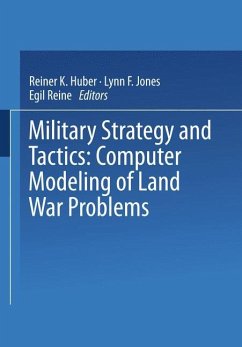This volume brings forth a set of selected papers from the Conference on Modeling Land Sattle Systems for Military Planning. Sponsored by the Special Programme Panel on Systems Science of the NATO Science Committee, the conference took place in Ottobrunn, Germany, at the War Gaming Centre of Industrieanlagen-Betriebsgesellschaft. The idea to organize a conference on land battle systemmodelswas first suggested to me in 1g72 by Andreas Mortensen, then a member of the Norwegian Defence Research Establishment and presently at the SHAPE Technical Centre, when we discussed the apparent inconsistencies of various evaluations of force capability within NATO. Frequently, decision makers are confronted by contradictory results of different studies addressing essentially the same problern leaving them with the impression that the tools of systems analysis and operations research may not be very objective guides. However, experienced systems researchers know that a detailed comparison of models, their assumptions and inputs, would generally show that results are not really contradictory. But not only seem the decision processes in large national and international organizations tobe suchthat a comparison can hardly ever be accomplished, also the docu mentation available is rarely sufficient to really camprehend the differences in results. For these reasons, we felt that an effort to review the state of the art of model ing in support of force capabil ity assessments was overdue.
Hinweis: Dieser Artikel kann nur an eine deutsche Lieferadresse ausgeliefert werden.
Hinweis: Dieser Artikel kann nur an eine deutsche Lieferadresse ausgeliefert werden.








